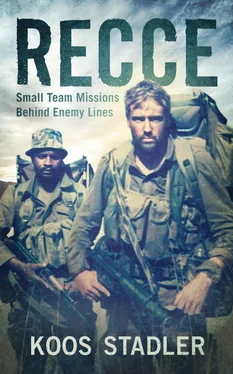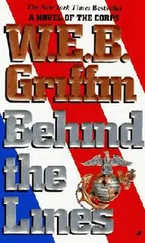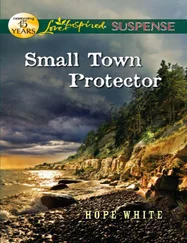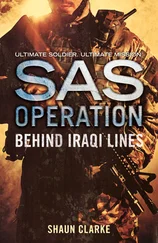In the mid-1970s the need for a tactical reconnaissance capability led to the formation of reconnaissance platoons at the infantry units permanently based in the operational area of the Border War. At the time, 31 and 32 battalions were the first to deploy tactical recce teams into Zambia and Angola, with the aim of locating SWAPO bases situated across the border in what were believed by SWAPO to be “safe” areas.
Initially, the tactical recce wings were trained in minor tactics by instructors from the Reconnaissance Regiments, and conducted recce missions in the tactical sphere of operations, many of them prior to attacks or raids against enemy bases and infrastructure. Over a ten-year period, roughly from 1976 to 1986, the reconnaissance wings took a lot of weight off the Reconnaissance Commandos by conducting special operations for sectors 10, 20 and 70 in the operational area. [3] Sector 10 covered Kaokoland and Ovamboland; Sector 20 covered Kavango and Western Caprivi; and Sector 70 covered Eastern Caprivi.
This allowed Special Forces the freedom to operate in the strategic environment.
Although there was never a clear-cut distinction between tactical and strategic deployments, it was generally accepted that the tactical recce wings would operate in the direct areas of responsibility of the sectoral commands, at the time stretching as far as 60 km into Angola and Zambia. Yet there were numerous exceptions to this general rule. Many Special Forces missions were in fact conducted in what was considered the tactical sphere, as was the case with pseudo-guerrilla operations carried out by 51 Reconnaissance Commando on both sides of the South West Africa–Angola border.
Textbook definitions of the time described strategic reconnaissance as operations in which a team operated independently, with no direct support from air or land resources. The information gained from the mission would also not automatically lead to a follow-up action by own forces, but would have an effect on the strategic outcome of the war. Tactical reconnaissance missions were, however, seen to be conducted in the tactical sphere of operations, within range of air- or land-based support, while the outcome would always be an immediate action by own forces.
The modus operandi of the tactical reconnaissance platoons varied from unit to unit. A recce patrol leading the advance in front of a fighting force would often be armed and ready for combat, thus a sizable number of four or six operators would be the order of the day. For a recce on a SWAPO base, a patrol would consist of no more than four men. This number was reduced to two if penetration of the facility was required. Often, even in the early days, the sparse undergrowth and the nature of the terrain would preclude the use of bigger teams, so by the late 1970s the concept of small teams had already been tentatively applied by the tactical recce wings.
The selection for the recce wing turned out to be the toughest experience of my life so far. Selection started with a week’s PT course at the base, from 05:00 in the morning until late at night. The idea of the PT sessions was supposedly to get us fit and ready for the bush phase, but it just managed to make us dog-tired, as we were still adjusting to the hot and humid weather of the Caprivi. Then we were taken out into the bush for the real selection, which turned out to be a never-ending slog through the bush, naturally with full kit, from one rendezvous (RV) to the next. At each RV, the instructors would meet us with a new little surprise, either a stiff PT session in the sand or leopard-crawling for what felt like miles. Then we would be given a new compass bearing to the next RV some impossible distance away, where they would meet us the following day.
For the first leg of our adventure we were given a grid reference on the Angolan cutline – the border between the Caprivi and Angola – to be reached by the next morning. Carrying packs weighing in the order of 30 kg, we walked through the night and were in time for a PT session right there in the Caprivi sand on the Angolan border. At 09:00 we got our next RV – another grid reference approximately 30 km further east down the Caprivi Strip. We had to report there by the following morning at 08:00, which I thought was impossible, given the thick vegetation and the state we were in.
Once they had given us our orders, the instructors departed. We had no food, and only the water left in our packs. Just us and the endless savanna of the Caprivi. Fortunately the bush was lush and green after the splendid summer rains. There was water in abundance in the omurambas (open stretches of grass-covered plain, generally running parallel between the dunes). I decided that there was no better time to cover the next leg than now. The less we needed to walk during the night, the better.
Easier said than done, as there and then I was confronted with a situation I regard as my first real test of wills with another adult. A fellow candidate officer, a character I did not have much time for, took the role of leader upon himself and declared that we would rest over the heat of the day and start that afternoon at 15:00, giving us enough time, he reckoned, to cover the 30 km before 08:00 the next morning. We argued. Everyone was tired and he won the day.
I decided that they could rest; I was leaving. Quietly, I turned around, put my pack on, found my bearing on the compass and started moving out. Only one other guy realised the stupidity of the group’s decision to wait out the day while being on recce wing selection. He shouted, “CO, wait, I’m coming with you”, shouldered his pack and fell in behind me.
For the two of us the experience turned out to be an excellent introduction to the realities of the bush. We encountered lots of elephant and other game. We soon learned where to find water in the omurambas, and how to avoid the elephant herds by circling downwind, and also how to watch each other’s back.
Once, while filling our water bottles at a water hole, we had a seriously close shave with an elephant bull. My buddy was sitting opposite me at the water’s edge, watching my back from the other side of the water hole, when I suddenly saw an elephant emerging from the brush right behind him. I didn’t even have time to shout. But he saw my frightened face and jumped. At that point the elephant still hadn’t seen him. His startled shout and quick reaction probably saved his life, as the elephant got as much of a fright as he did and charged away into the bush.
In the end, we were well in time for the RV. The rest of the selection group was found a day later, after they had started discharging flares and generally making themselves noticed by firing into the air. They had run out of water on the first day and got lost, as they did not keep count of the minor cutlines they had to cross during the night. To give them a reasonable chance (as the instructors did not really know what had happened), they were put back on the course. They were moved by vehicle to an RV further along the route the selection course would cover, and in the process did a much shorter selection than us.
The selection continued for another week. I lost count of the days and of how many candidates were left. To this day I do not know what distance we covered during the course. I also did not care how many guys properly passed the selection, because, as it soon turned out, after our selection and the Minor Tactics course, the first operational deployment sorted out the ones that were not cut out for the job.
I learned two critically important things during that week. The first was something I had already started to understand the day I had to dig the grave in the cemetery outside Ariamsvlei: never even think of giving up, because then you will. The second was: do what you believe is right, without compromise, and never blindly follow the crowd. These truths became my guiding principles during my Special Forces operational career.
Читать дальше












